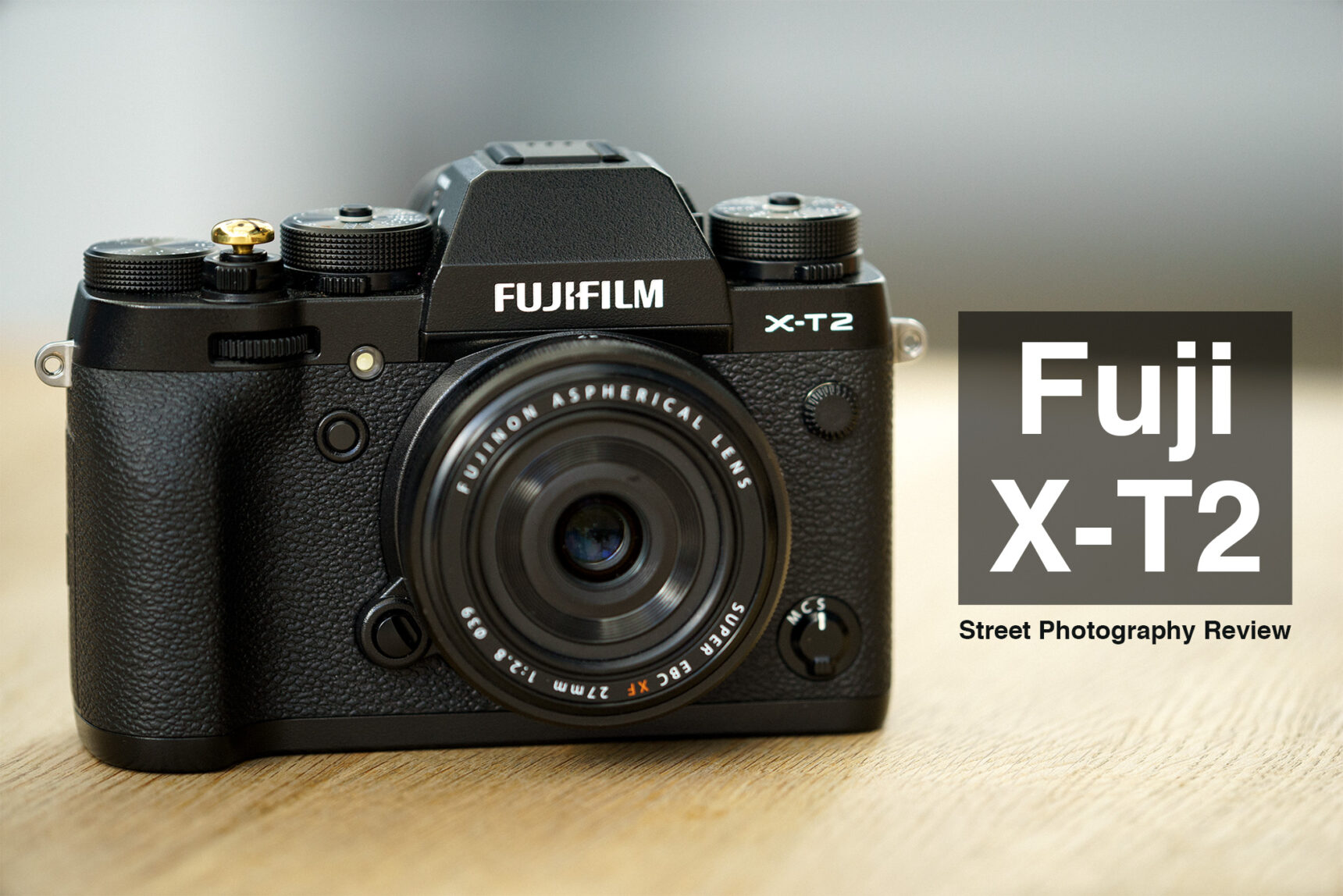The original Fuji XT1 was released in 2014 and it was one of the first mirrorless cameras to be considered a serious photographic tool. After 3 long years, the Fuji XT2 takes its place at the top of Fuji’s X Series of cameras. Can this DSLR style camera hold up as a dedicated street photography shooter? Hit the jump to read our Fuji XT2 street photography review!
Fuji X-T2 Street Photography Video Review
I had the chance to shoot with the Fuji XT2 for a few weeks and I walked away with a profound respect for Fuji’s excellent little shooter. The camera’s handling, speed and usability make it perfectly suited to street photography and one of the slickest cameras I’ve used in quite a while.
As always, this review is focused on Fuji XT2 street photography so I won’t be diving into any menus or discussing hardcore technical aspects of the camera. My reviews focus on what it’s like to use this camera on the street as an every day shooter. So let’s get on with the review!
It’s Just Like The X-Pro2 Only Different
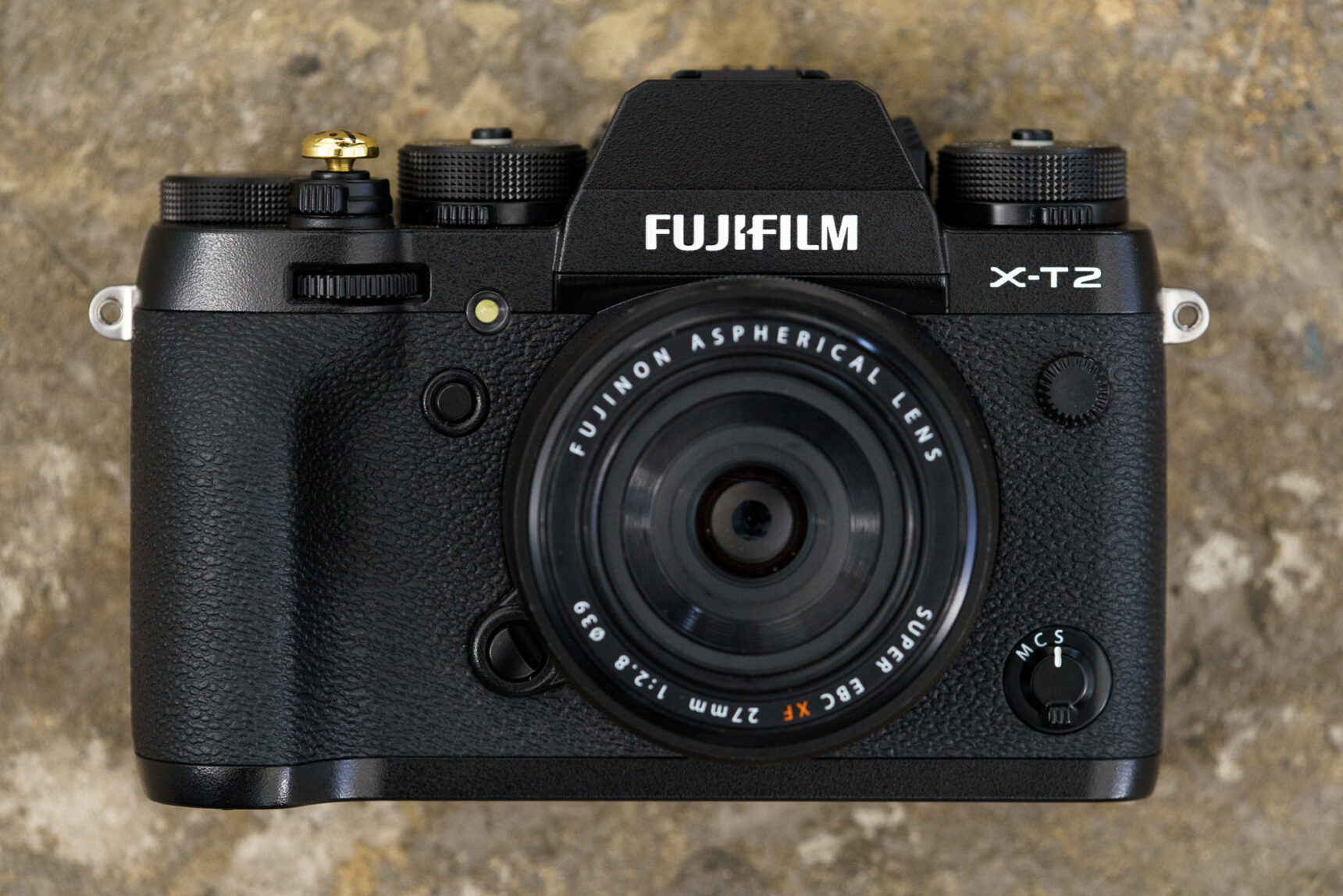
The Fuji XT2 is being hailed as Fuji’s co-flagship camera – a title it shares with the venerable X-Pro2. The two cameras use the same processor and sensor so at the end of the day you’re going to get the same image quality from both. But the XT2 distinguishes itself based on form factor and usablity with a few key differences:
- Form Factor / DSLR Style Body
- Improved Autofocus
- Dual Card Slots – Both UHS-II Compliant
- Articulated LCD With Vertical Mode
- .77X EVF / 100 FPS Refresh Rate
- Separate ISO Dial
- 4K Video Recording
Any one of these differences could be a decision maker but when considered together they make the Fuji XT2 a unique little shooter in its own right.
Form Factor / DSLR Style Body
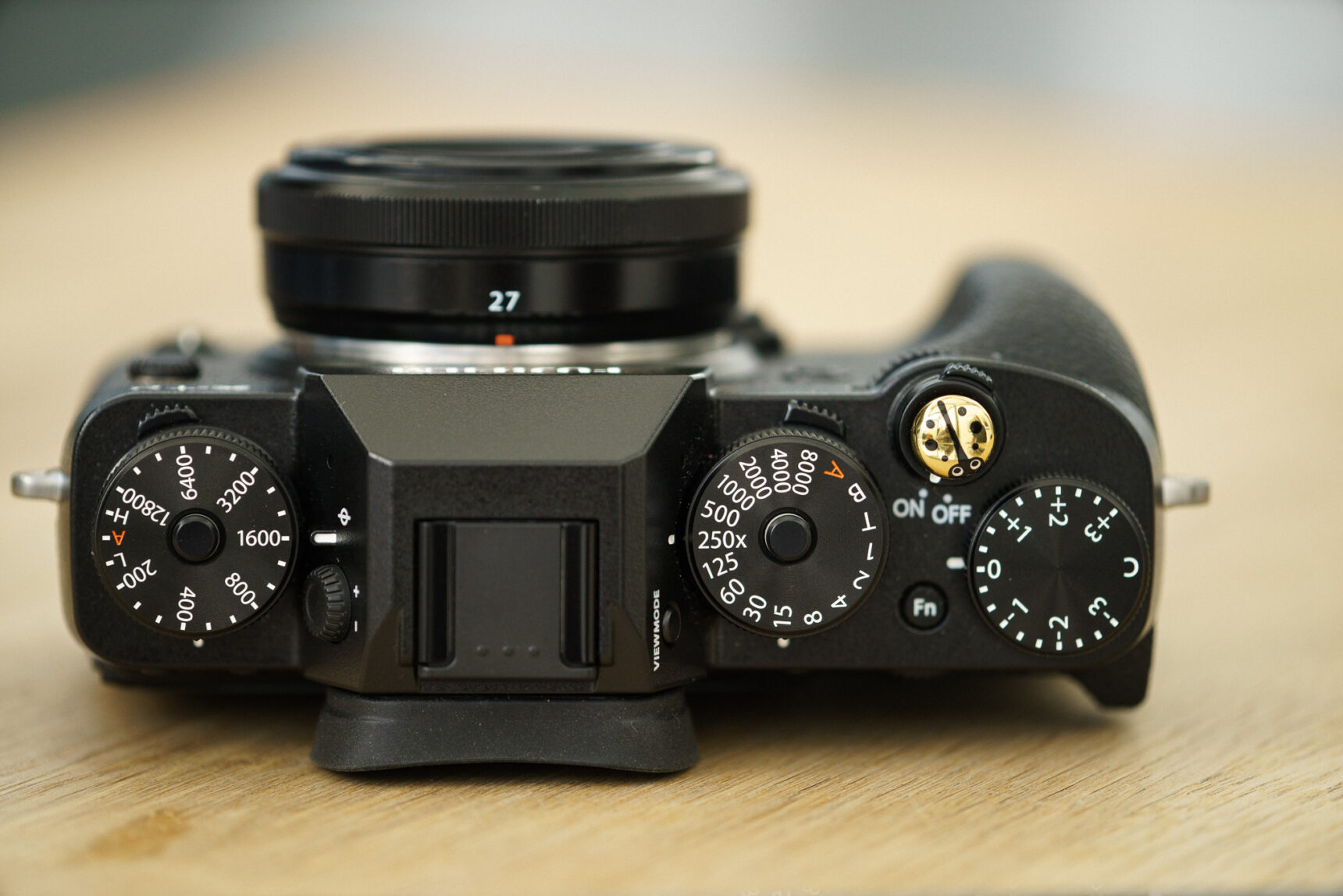
The Fuji XT2 keeps the same DSLR form factor as the XT1 with the EVF in the center of the camera plus a comfortable grip and thumb tab. I’m a big fan of rangefinder style bodies so I’m typically attracted to cameras like the XPro2 but after using the Fuji XT2 for a couple of days I found myself really appreciating the modern ammenities that this body style provides.
The camera is compact and sits comfortably in the hand. All the buttons were logically placed and it immediatley felt like home to me. Of course, you have to be comfortable shooting with an EVF for this style of body to work and the XT2’s EVF is one of the best I’ve ever seen (more on that later!)
Improved Autofocus
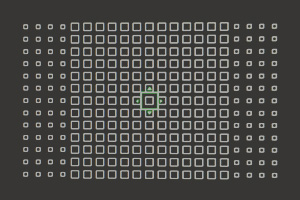
The Fuji XT2 boasts 325 AF points across the frame with 91 phase detection points (compared to 271 and 77 on the XPro2). In addition to extra points, Fuji has tweaked the algorithm so the camera uses the phase detect points more often which makes the XT2 autofocus blazing fast. When used with one of the newest f/2 lenses the XT2 has industry leading autofocus speed that tops any other mirrorless camera currently available. In practice I can definitely say that the focus speed is that really that good!
The XT2 also adds a slew of customizable continuous autofocus tracking modes that would make a lot of sports photographers happy. Not something that comes into play that often on the street but it’s nice to know it’s there if you need it!
***A recent firmware upgrade brought the new AF algorithm to the XPro2 but the XT2 still wins in the sheer number of autofocus points available.
Dual UHS-II Card Slots
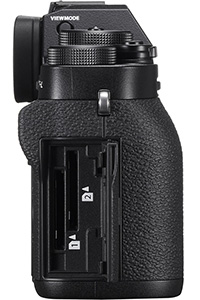
The Fuji XT2 has dual card slots just like the XPro2 but both slots are now UHS-II compliant for super speedy read/write speeds required for 4K video. Only one of the card slots was UHS-II in the Xpro2.
Dual card slots can be used sequentially or simultaneously to backup your images in real time. This could also come in handy for street shooters who may be asked to delete photos from time to time. Super easy to delete the shot from one card without mentioning the backup… At least you know that one great shot will never get away!
The door to the card slots locks solidly in place and is weather sealed to protect your cards from the elements. It’s a nice touch that shows Fuji’s attention to detail.
That Crazy Articulated LCD Monitor
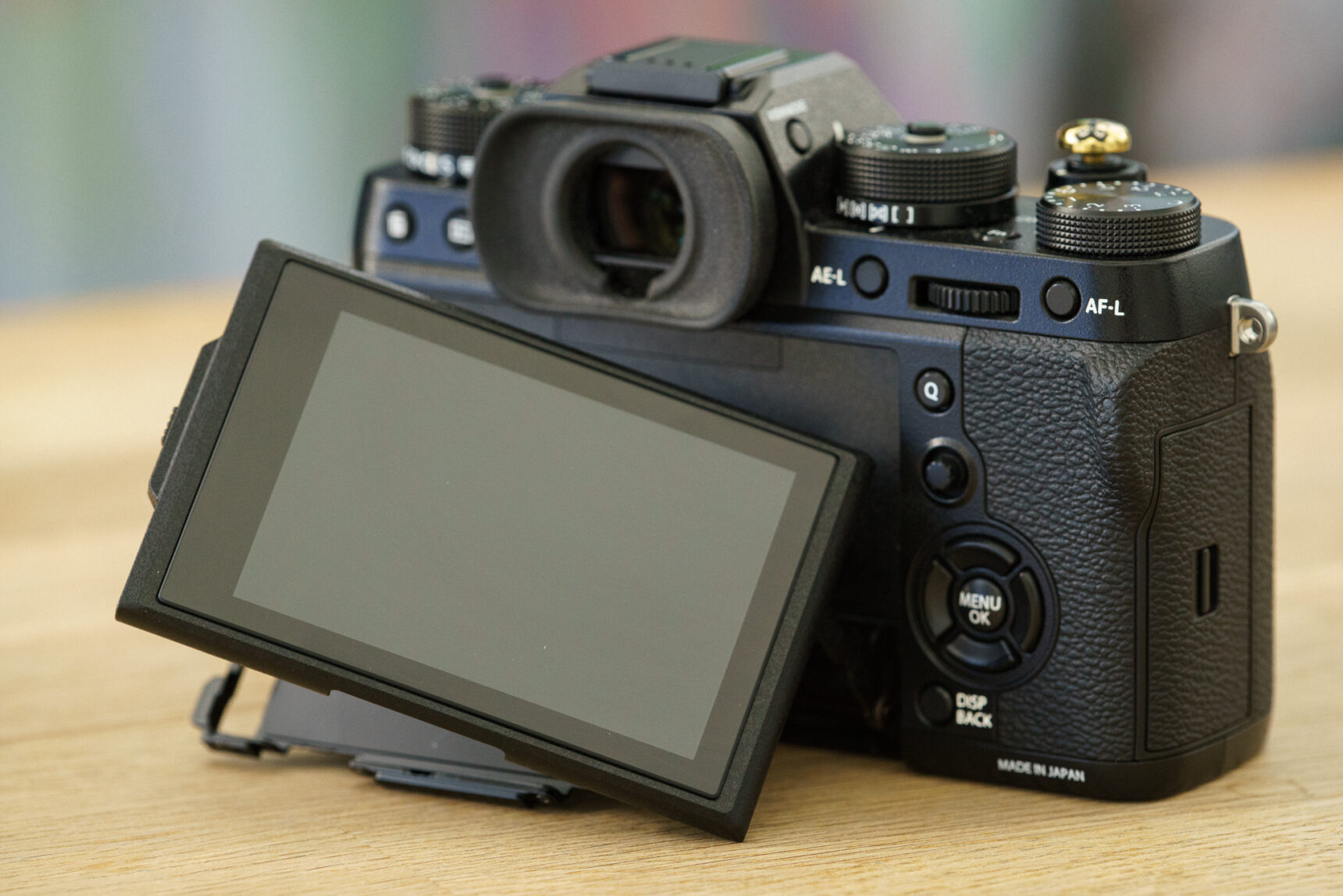
The Fuji XT2 LCD is articulated in 2 directions which opens up a few more possiblities for shooting. The normal mode tilts the LCD which allows for waist level shooting on the street. Great for those moments when you want to be discreet while shooting!
But the XT2 also tilts in the opposite direction for shooting low angle vertical shots.
I’m an eye level shooter so I never really think of the LCD as a tool for framing the scene. A lot of other shooters swear by the LCD so it’s good to know it’s there if you need it.
Separate ISO Dial
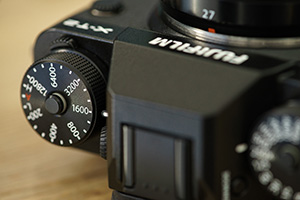
The ISO dial on the X-Pro2 was embedded in the shutter speed dial and changing speeds was finnicky and I hated it. The Fuji XT2 thankfully keeps a separate ISO dial that’s easy to read and quick to change.
They added push to lock buttons to the ISO and the shutter speed dials but they were stiff enough that I never had to worry about them moving by accident. This being said, the push to lock system works nicely and I found it easier to use than the push and hold lock on the X-Pro2.
4K Video
At long last, Fuji has a camera that can shoot high quality video. The Fuji XT2 ups this game by adding 4K video that is being praised industry wide for its quality and versatility. You can record video with any of Fuji’s built in film simulations including ACROS so this opens up some interesting possibilities!
I’m probably never going to shoot video on the street but I do shoot video for the site and it’s good to know that the XT2 can hold its own.
.77X EVF With 100 FPS Refresh Rate
The Best EVF I’ve Ever Used
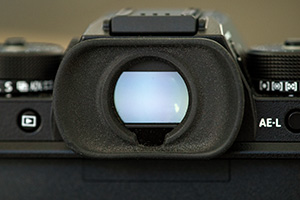
The Fuji XT2 gives up hybrid viewfinder system in favor of a high resolution .77X EVF for framing your shots. This might scare a lot of street guys off but it’s time to give EVFs another look!
As far as I’m concerned this EVF is the star of the show for Fuji XT2 street photography. The EVF is twice as bright as the one in the XT1 and the refresh rate is now 100 fps. It’s bright enough to see in full sunlight and the 100fps refresh rate creates a lag-free EVF image that’s so life-like that it’s easy to imagine you’re looking at the actual scene instead of a video representation of it. We’re approaching perfection with the Fuji XT2 EVF.
The magnification is .77X and coming from the X100T with its .50X EVF I can tell you it makes a huge difference. I can actually see the expressions of the people I’m photographing on the street and a whole new world of detail is available to me.
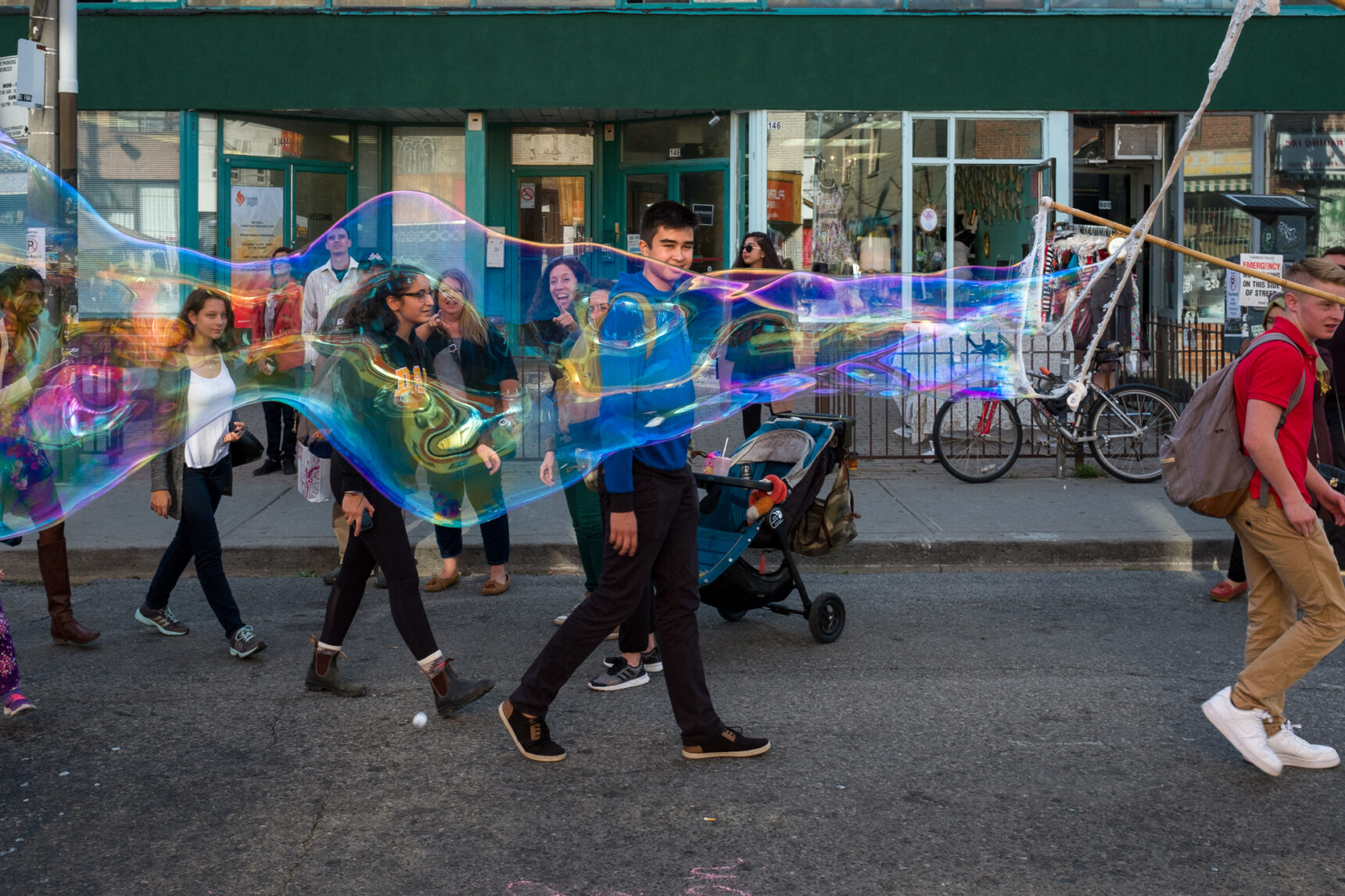
One of the problems with shooting with and EVF is the blackout time required to make an exposure. You’re seeing a live image right off the sensor and the EVF needs to “turn off” in order to capture an image. This can be a deal breaker for a lot of photographers – EVF blackout on my X100T is close to a full second!
The Fuji XT2 EVF blackout time is an incredibly short 114 milliseconds. That’s shorter than the amount of time it takes to blink your eyes! In practice this makes a nearly seamless shooting experience where the process of making an exposure disappears and you’re able to see the scene you’re shooting almost instantly. Not quite as good as an optical viewfinder where you can see your subject at the exact moment of exposure – but damn close!
High ISO Performance
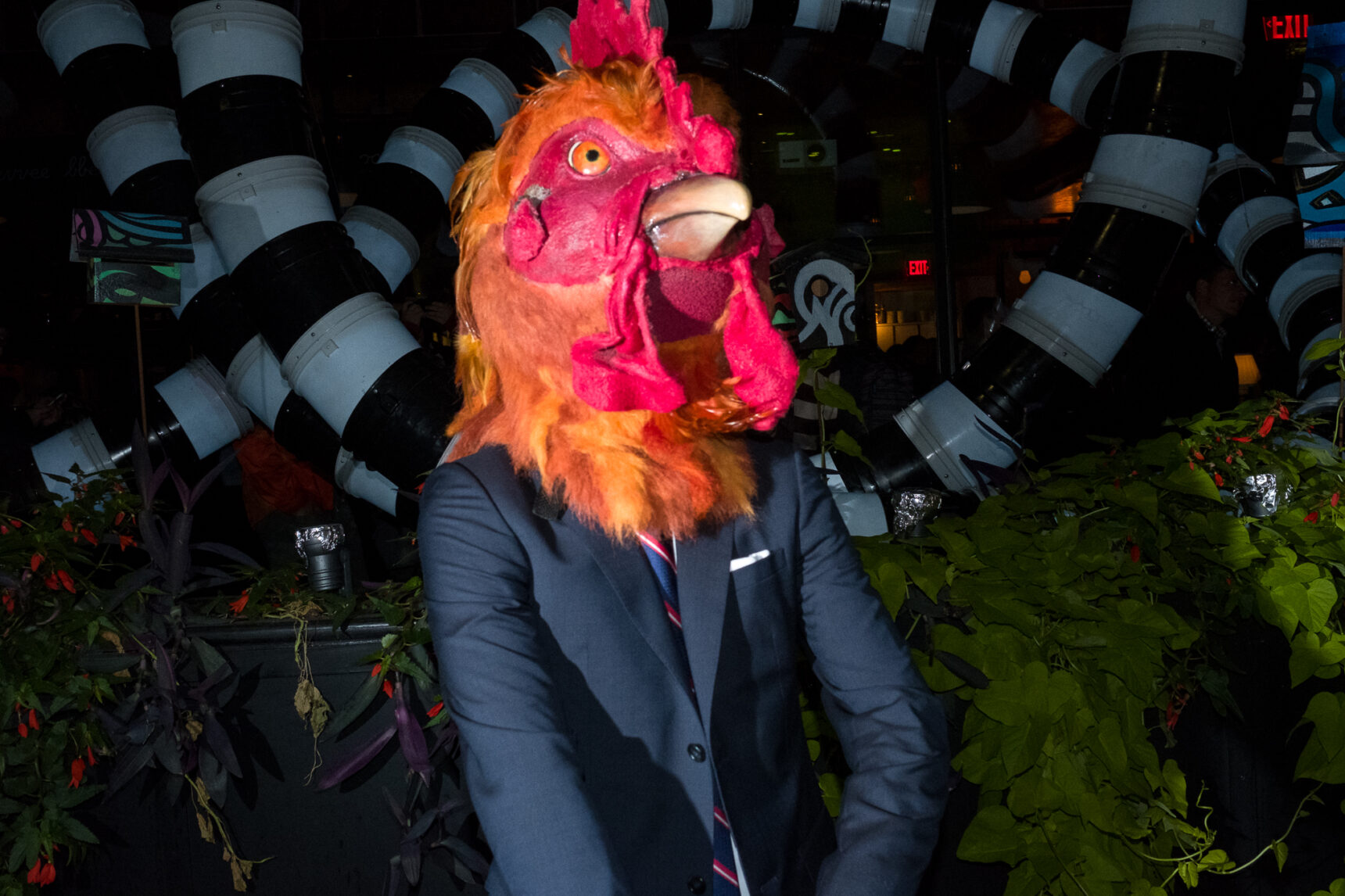
The Fuji XT2 uses the same X-Trans 3 sensor as the XPro2 and it’s widely regarded as the best APS-C sensor on the market. Images have great dynamic range without losing contrast in the shadows and colors are pleasing with natural gradation of tone. But this new sensor also shines in low light with images being usable up to ISO 6400. The small amount of noise can easily be controlled with a touch of noise reduction in Lightroom.
High ISO shooting normally sacrifices lifelike color for higher speed but the XT2 holds its own in this department. Colors are realistic but at ISO 6400 and higher colors start to lose a bit of their substance. This really limits high ISO shooting to situations when you don’t have a choice but I have confidence using this camera at ISO 3200 without giving it a second thought.
It’s a thoroughly modern sensor with high ISO performance to match.
No Built In Flash? No Problem!
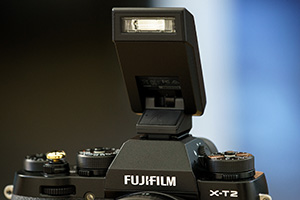
One of the things I liked about the X100T was the built in flash. I shoot with a flash on the street and the built in flash lets me trigger my EFX-20 hand-held flash wirelessly using commander mode. So the camera flash fires a small burst that triggers your handheld flash in slave mode. It’s not as good as a dedicated wireless controller but it get the job done most of the time.
The XT2 doesn’t have a built in flash but it comes with a low powered shoe mount flash that runs off the camera’s battery. This flash is pretty much useless for anything other than a touch of fill but it’s GREAT for triggering my EF-X20 flash in commander mode. I found it triggered my hand held flash more reliably than the built in flash on the X100T (probably because it sits a little above the camera body).
Fuji has also introduced the EF-X500 flash system that features wireless TTL control for multiple flashes. It’s a great system if you do events or location portraits but for the way I shoot flash on the street I really prefer the tiny little EF-X20.
Build Quality / Wiggly Bits
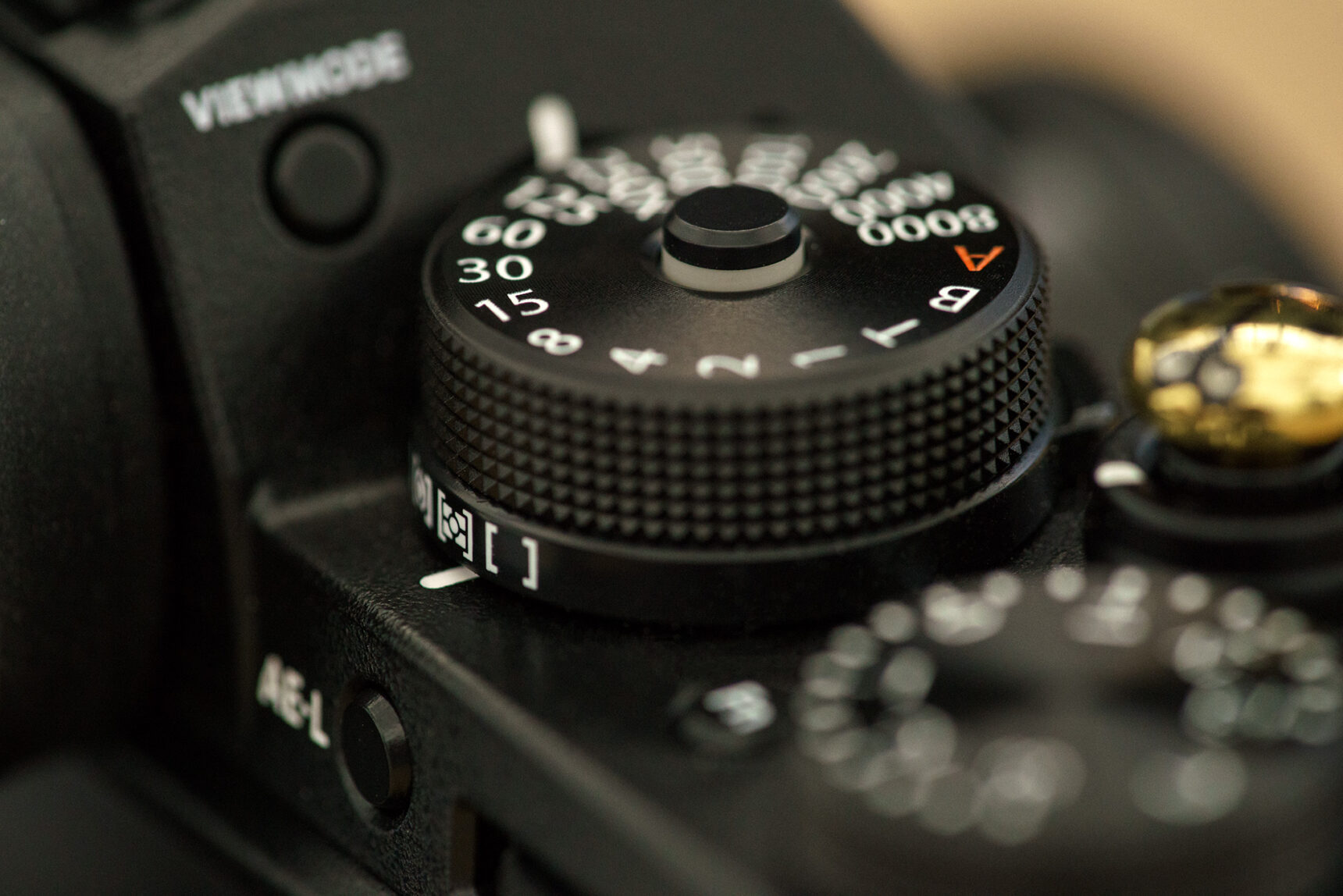
Fuji has a reputation for producing well made quality photographic tools and the XT2 is no exception. The solid magnesium body feels solid in the hand and all the buttons and dials are solid and clicky – just they way they should be. There’s very little to complain about with this camera but there are a few wiggly bits that I wish weren’t there.
The LCD monitor and viewfinder eyecup on my particular camera had a bit of play in them and wiggled if you fiddle with them. I never noticed these problems while shooting with the camera but I knew they were there and couldn’t help fiddling with them. A lot. The play in the LCD seemed to be something specific to my particular camera and I haven’t seen it on another body. But the viewfinder eyecup just has a bit of play in it. This piece is replaceable so it’s probably by design.
The only other complaint I can think of is the little rubber cover on the port for the battery grip on the bottom of the camera. This is literally just a rubber flap that’s held in place by friction. I never had it fall off in the 3 weeks I tested the camera but I would definitely throw some gaffers tape of that area as soon as possible to avoid losing that cover. Chances are it would never fall off but I’m just like that…
The leatherette on the Fuji XT2 seems to be higher quality than the XT1 (which always felt rubbery and cheap to me). It’s grippy but with a solid texture that makes the camera feel like a premium product.
Overall, I’d give the Fuji XT2 an A for build quality. This is a mass produced product so there’s bound to be minor variations from camera to camera but it’s a solid little device that I would have no problem using as my primary shooter on the street.
Real World Fuji XT2 Street Photography

Features look great on paper but how does the Fuji XT2 handle on the street? In short, I like it a lot.
In spite of being a “DSLR style” camera, the XT2 is remarkably small and light weight. It actually feels a bit smaller in the hand than the XPro2 and it’s no problem to keep around my neck for a long day of shooting. I found the controls to be well laid out and all the buttons and dials were firm and clicky. No problems there.
As I mentioned in my Fuji XT2 street photography video review – I keep the camera in EVF mode with boost enabled all the time. I did find the camera was noticeably warm after a few hours of use but the same thing happens to my X100T. Not alarming but worth mentioning.
But the main attraction for me is that incredible EVF. The .77X image with 100 fps refresh rate is superb and gives a fantastic view of the world unlike anything else I’ve seen to date. It’s not the highest resolution EVF (the Leica SL has a 4K viewfinder) and it’s not the largest magnification (the Sony A7RII is .78X) but it’s a really REALLY good EVF. And considering the price point the XT2 wins hands down in my books.
Why am I so enthralled with the EVF when shooting Fuji XT2 street? It’s all about how much detail you can see while framing your shots. Take a look at the shot at the beginning of this section…
I remember seeing the two kids racing towards the camera and thought there might be a photo happening. I brought the XT2 to my eye just as the two beauty queens were walking into the frame on the right. I saw the girl lock eyes with one of the beauty queens and the quick responses of the XT2 let me get the shot exactly as I saw it at the time.
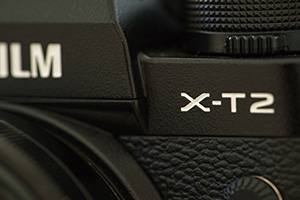
I still would have shot the scene with the X100T but honestly getting the expression of the running girl would have taken some of luck.
I can’t overstate how important the EVF was for my XT2 street photography experience. From watching the corners and basic framing to seeing the actual expression on my subjects. This camera was a joy to use that actually inspired me to keep looking for photographs long after my feet had given up the hunt.
A lot of street photographers romanticize the idea of a rangefinder camera as the perfect device for shooting on the street. And I’ll admit to falling under this spell myself! The optical viewfinder lets you see your subject at the exact moment of exposure and the framelines allow you to see outside the active frame to prepare for subjects that might enter the frame. Plus rangefinder cameras are typically quieter than their SLR counterparts which helps with stealthy shooting on the street.
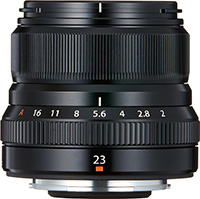
But the outstanding EVF with incredibly short blackout time combined with the super quiet shutter mechanism have really bridged the gap for me and the XT2 is the first DSLR style camera that I can see using as an everyday shooter on the street. Throw in the speedy new 23mm f/2 lens (35mm FF equivalent) and you’ve got a compact powerhouse that is going to make a lot of street photographers very happy.
I know, there are other compact mirrorless options like Sony’s full frame A7 series but the usability of those cameras is just no match for Fuji XT2 street photography. This is a great little camera that puts photography before technology. Are you listening, Sony?
Conclusion
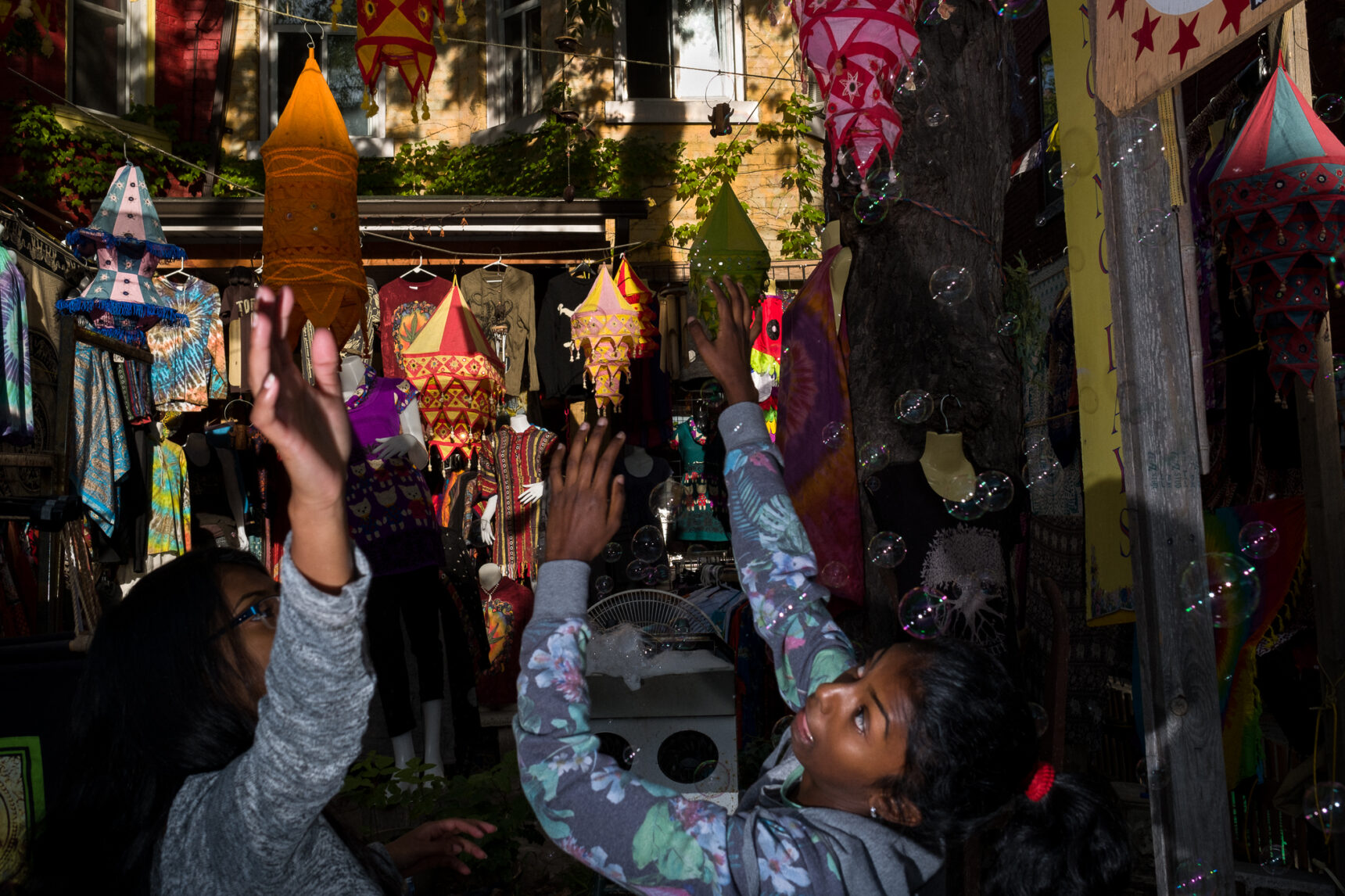
In a lot of ways I’m camera weary. Every few weeks a new camera is introduced with incremental feature upgrades designed to part photographers from their hard earned cash. At what point does the camera you have stop being good enough?
But the Fuji XT2 is enough of a step up from the original XT1 to warrant the price. The improved EVF is amazing and the new sensor is generally regarded as the best APS-C sensor on the market. The addition of 4K video recording and class leading autofocus makes the XT2 a desirable camera for a wide variety of users. And I think this is why the Fuji XT2 really shines.
My Fuji XT street photography experience was excellent but it’s not just a street photography camera! It’s the core element of a well rounded system that can easily handle a wide variety of photographic styles. It’s just a good camera.
Imagine that!
Fuji XT2 Pros:
- 24MP X-Trans 3 sensor.
- Great dynamic range while maintaining contrast in the shadows.
- Excellent build quality and controls.
- The .77X EVF with 100 fps refresh rate is amazing.
- Insanely fast autofocus.
- 4K video that’s actually quite good.
- Same quiet shutter as Fuji XPro2.
- $100 less than XPro2.
Fuji XT2 Cons:
- Crazy tilting LCD might be overkill for street guys.
- EVF eyecup is loose / wiggles.
- EVF sometimes drops to lower frame rate. Likely fixed with firmware update
Whether you pick the XT2 or the XPro2 is a matter of personal preference Both cameras will produce similar results so the choice really comes down to body style and EVF vs OVF/Hybrid Viewfinder. The outstanding EVF won me over and I really enjoyed my time with the XT2. I have no problem recommending the Fuji XT2 for street photography.
The Fuji XT2 is available online at your favorite retailer:
Fuji XT2 (body only) at B&H.
Fuji 23mm f/2 (black) at B&H.
Fuji XT2 (body only) at Adorama.
Fuji 23mm f/2 (black) at Adorama.
Fuji XT2 (body only) on Amazon.
Fuji 23mm f/2 (black) on Amazon.
If you prefer to shop local you can check Fuji’s website for a brick and mortar retailer near you:
Fujifilm – Where To Buy Digital Cameras.
Please support StreetShootr and use one of the links on this page if you decide to purchase the Fuji XT2 street photography camera. I will receive a small commission that helps keep this site alive and growing. Thanks for your support!
Fuji XT2 Street Photography Sample Images
Images shot as RAW and processed to taste in Lightroom. Click to view full size images.
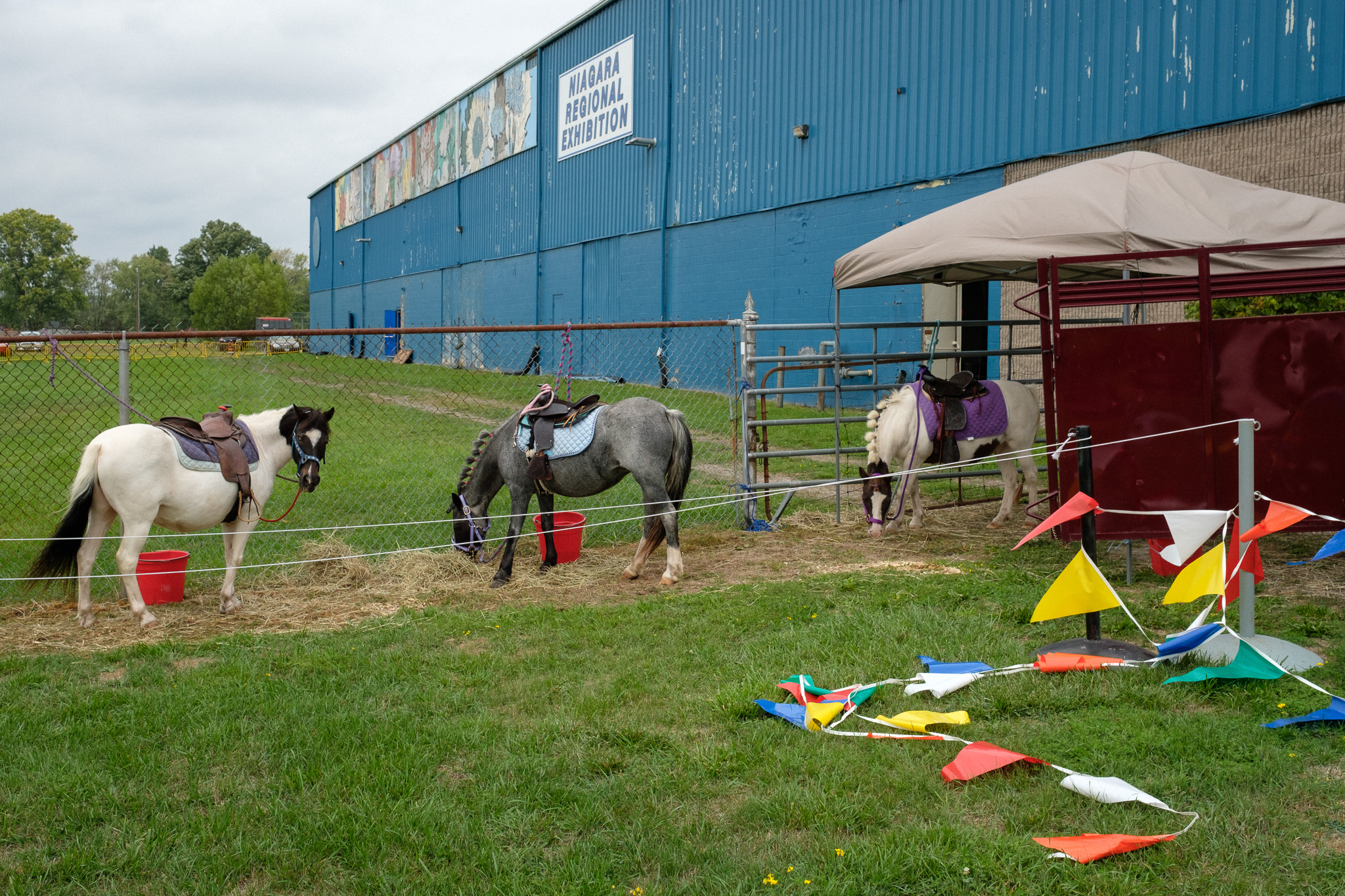
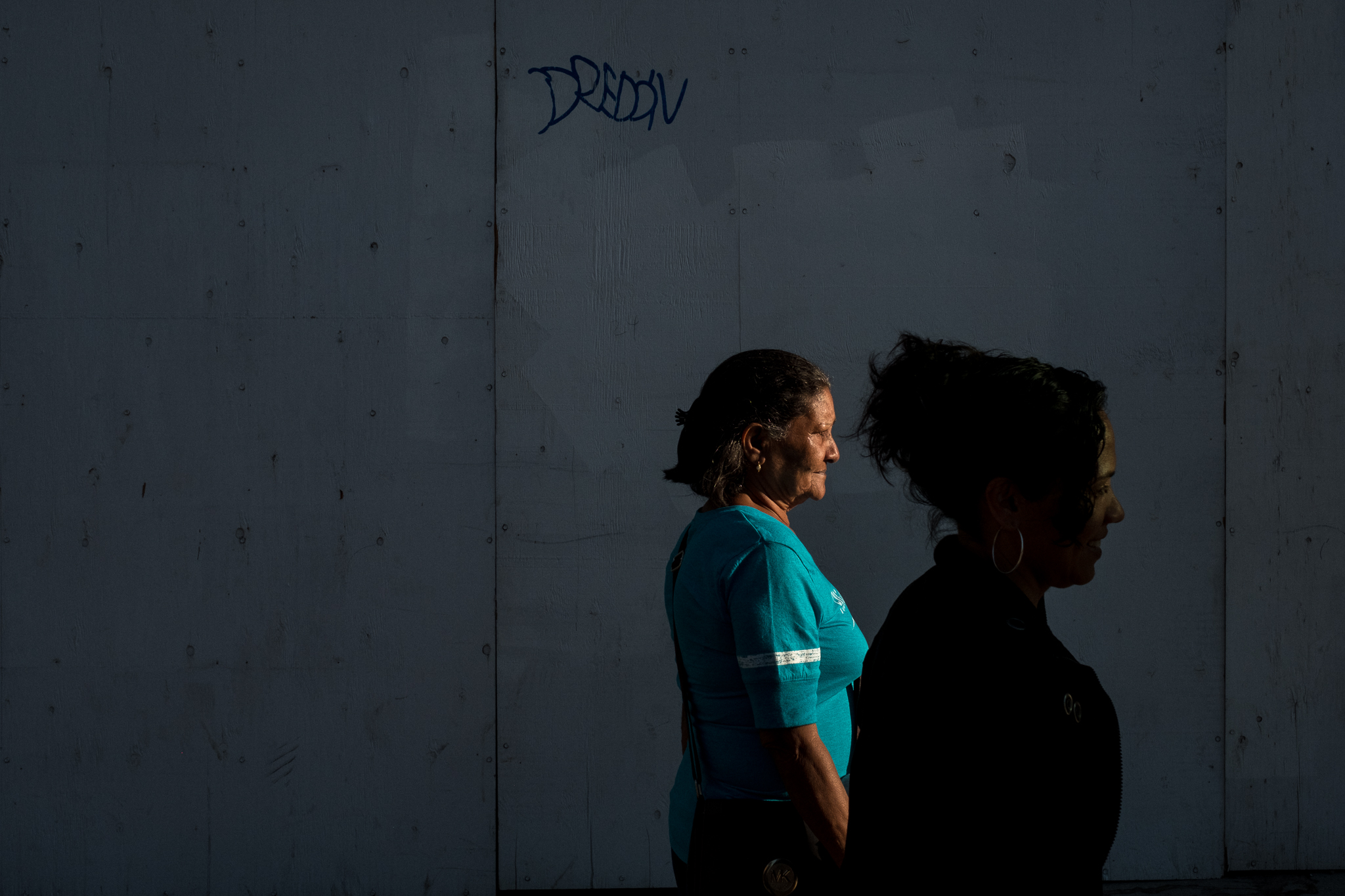
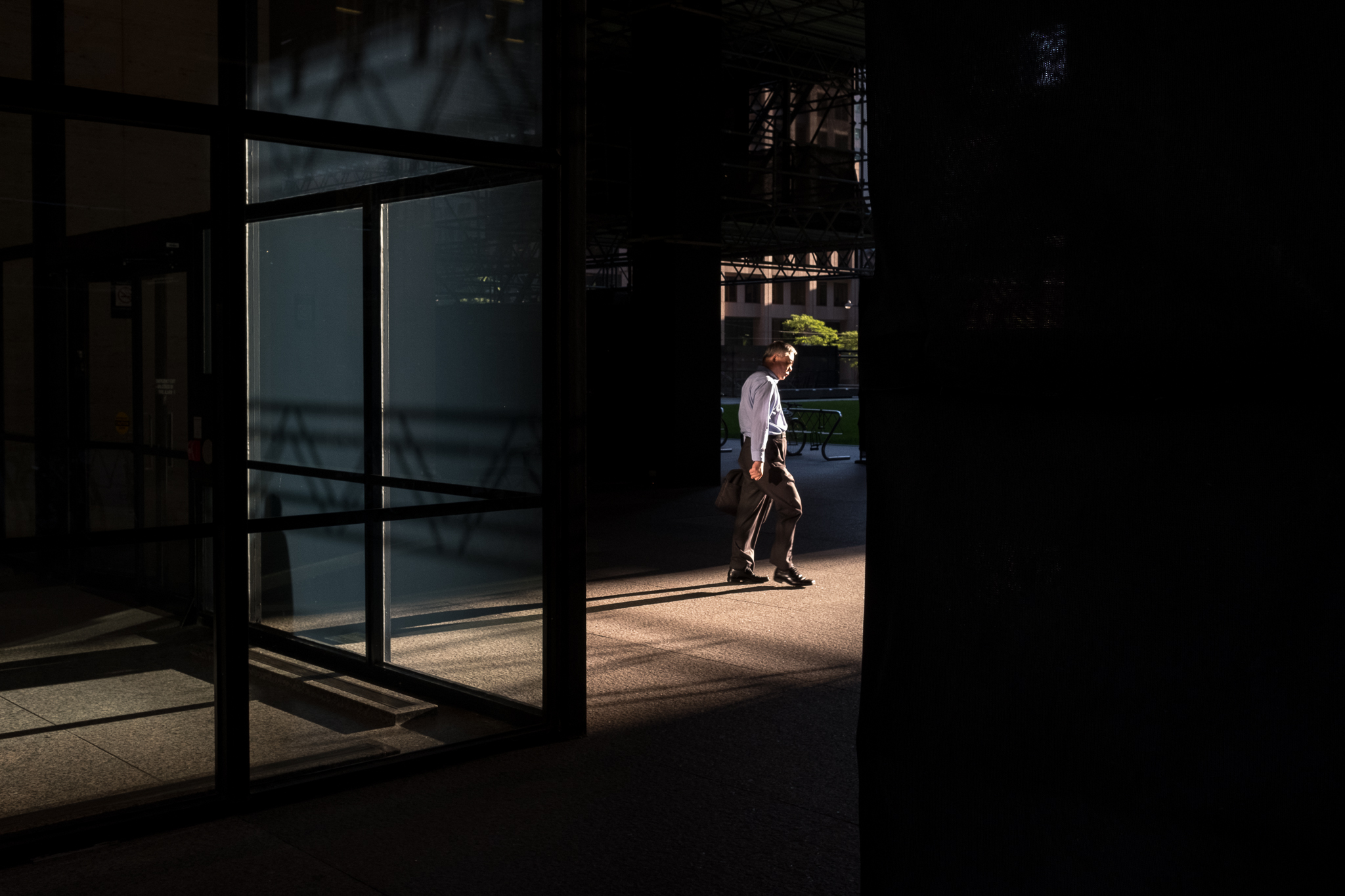
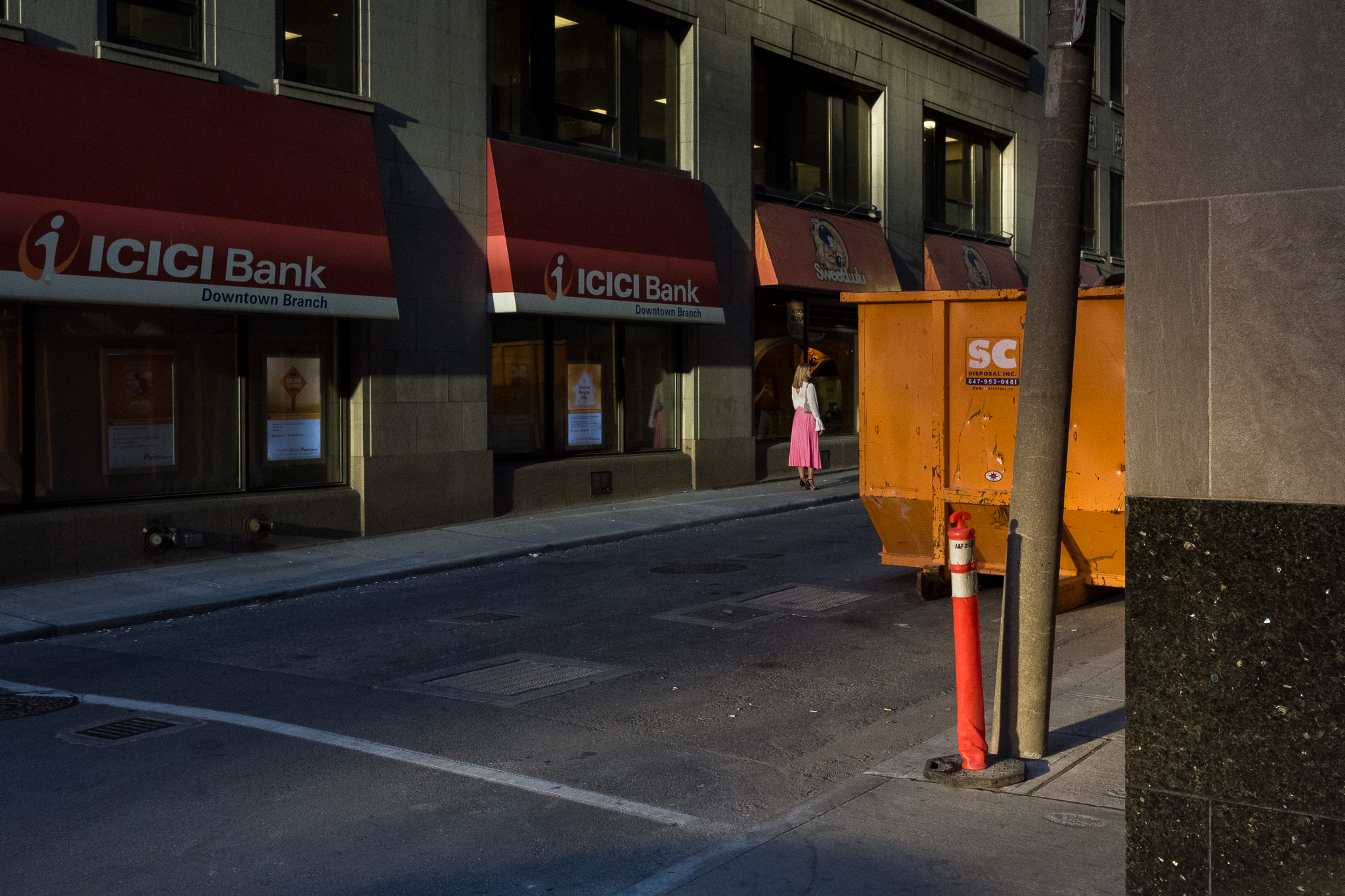
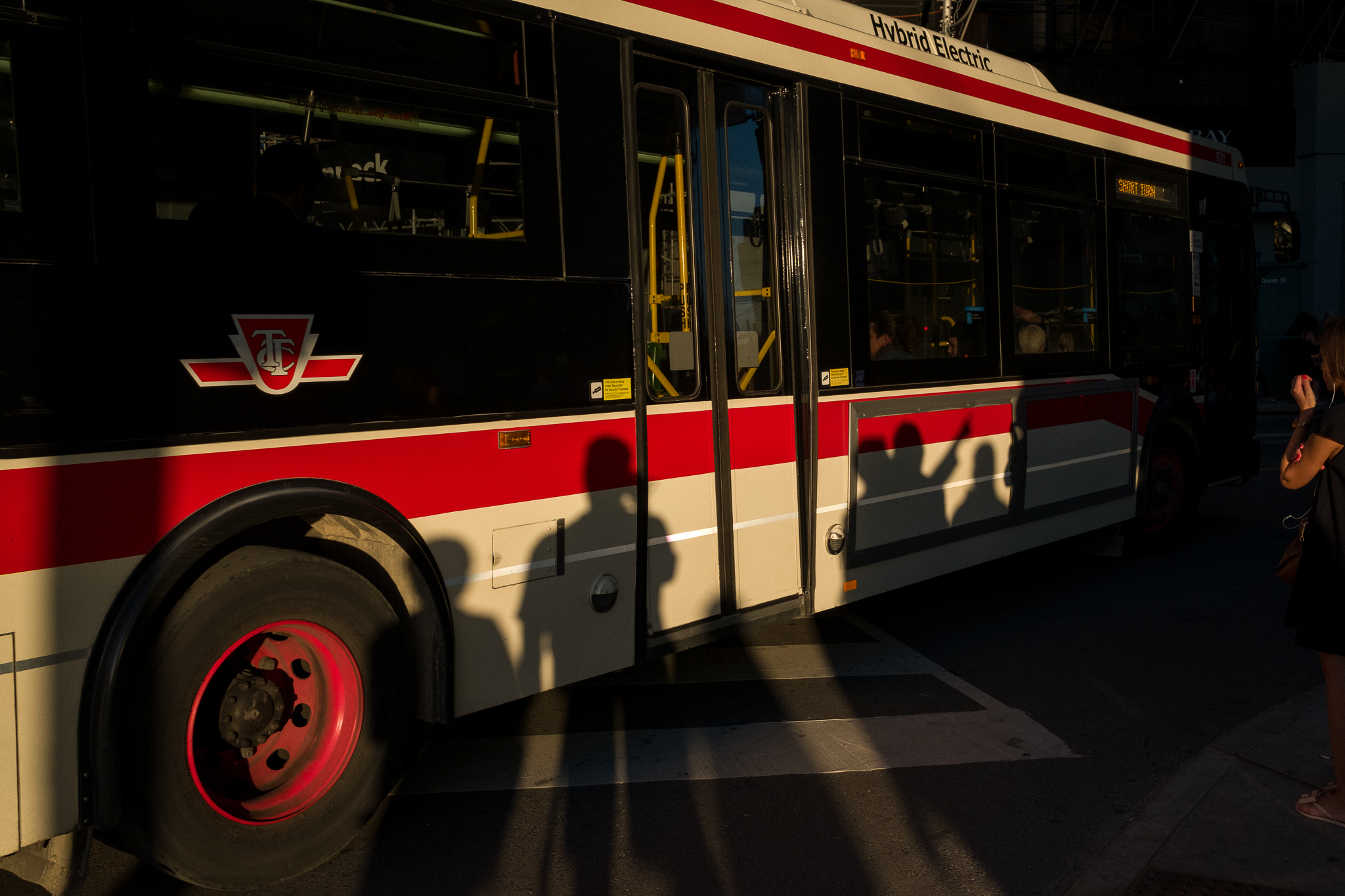
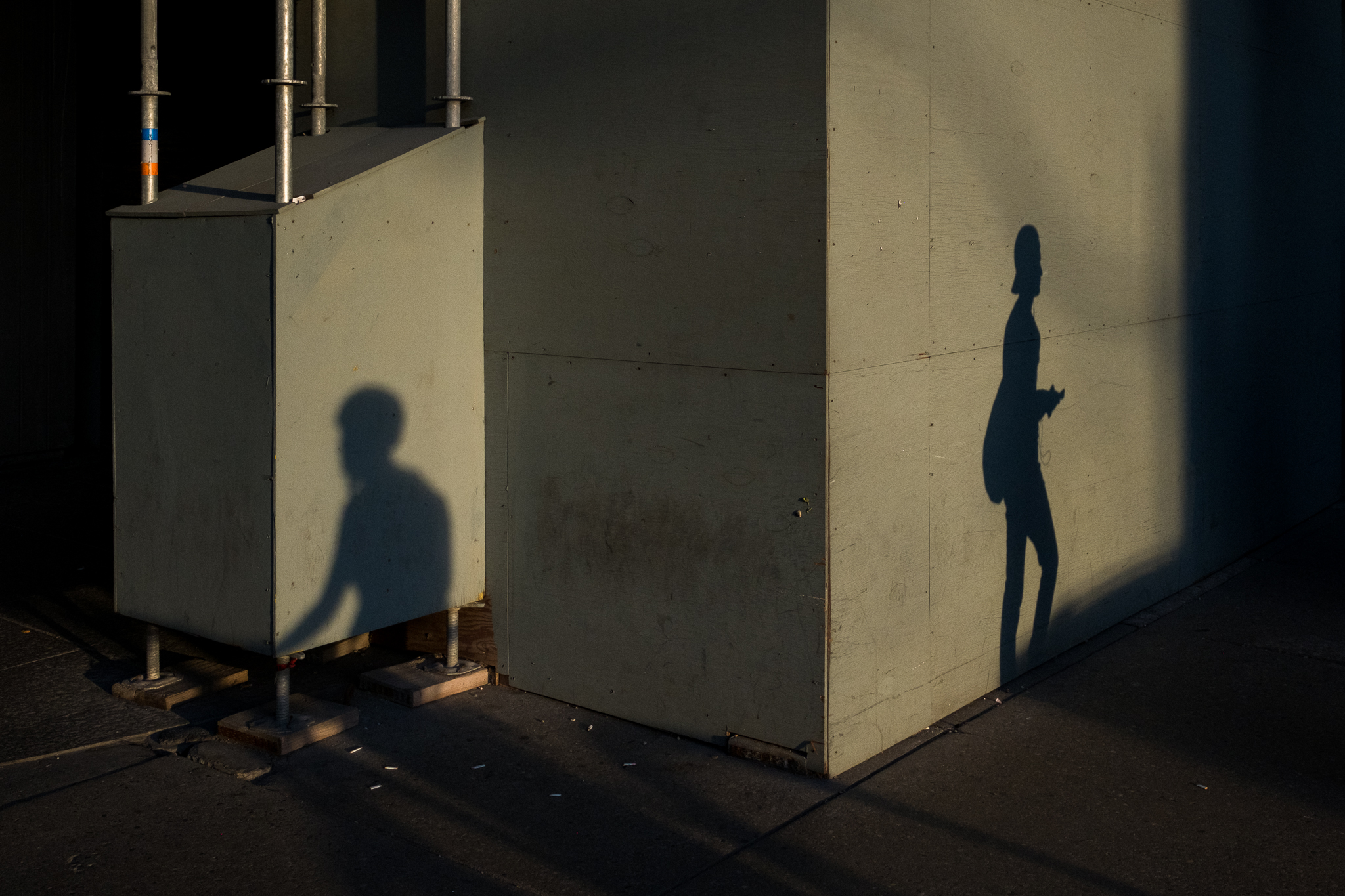
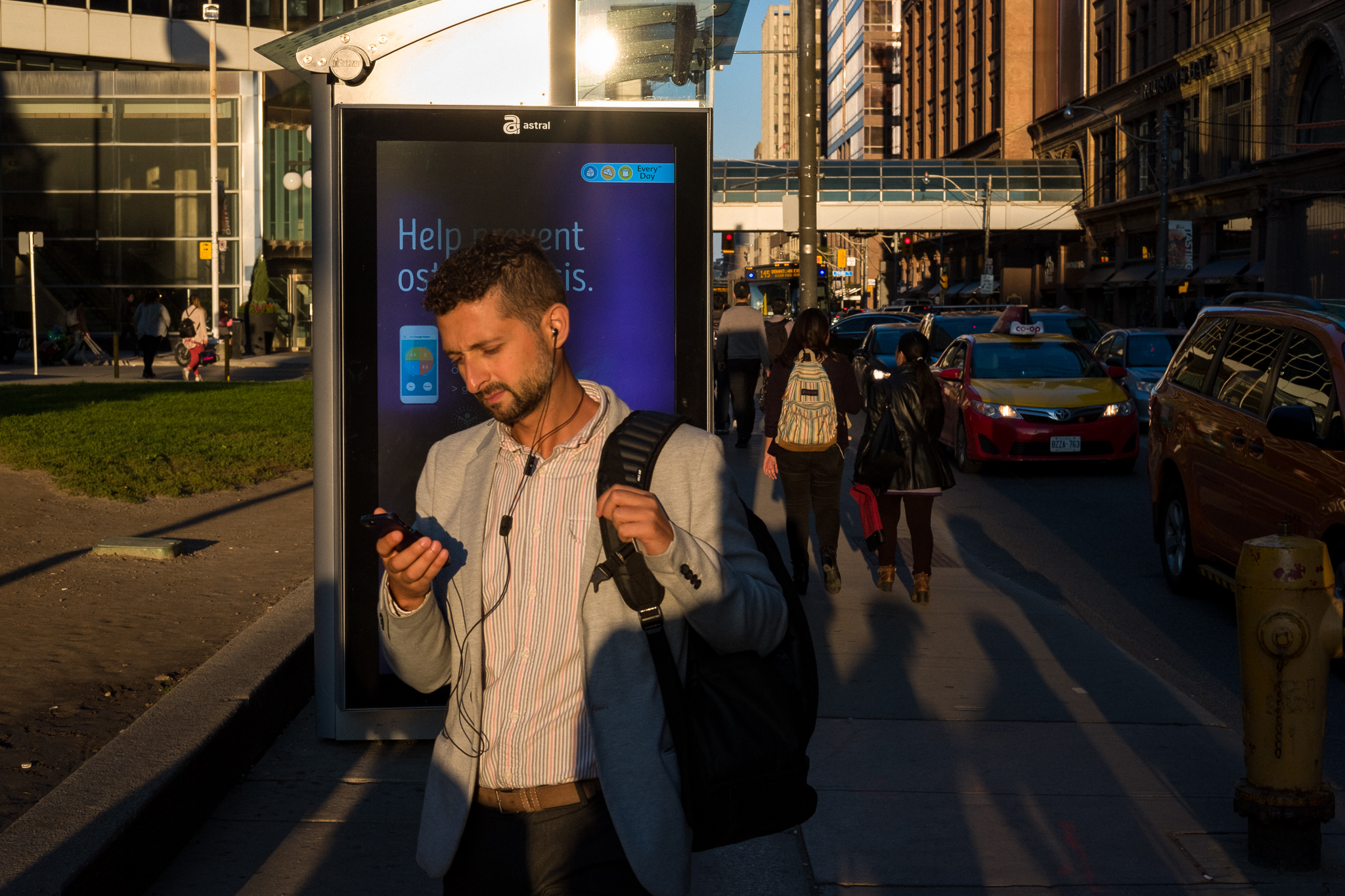

Special thanks to my friend Ed O’Neill for his help producing the video and photos for the Fuji XT2 street photography review. Check enoneil.com for some great work!
What’s your take on StreetShootr’s Fuji XT2 street photography review? A versatile camera that can have a positive influence your photographic process? Or not enough difference from the XT1 to warrant the price? Post your ideas in the comments below and keep the conversation going!

